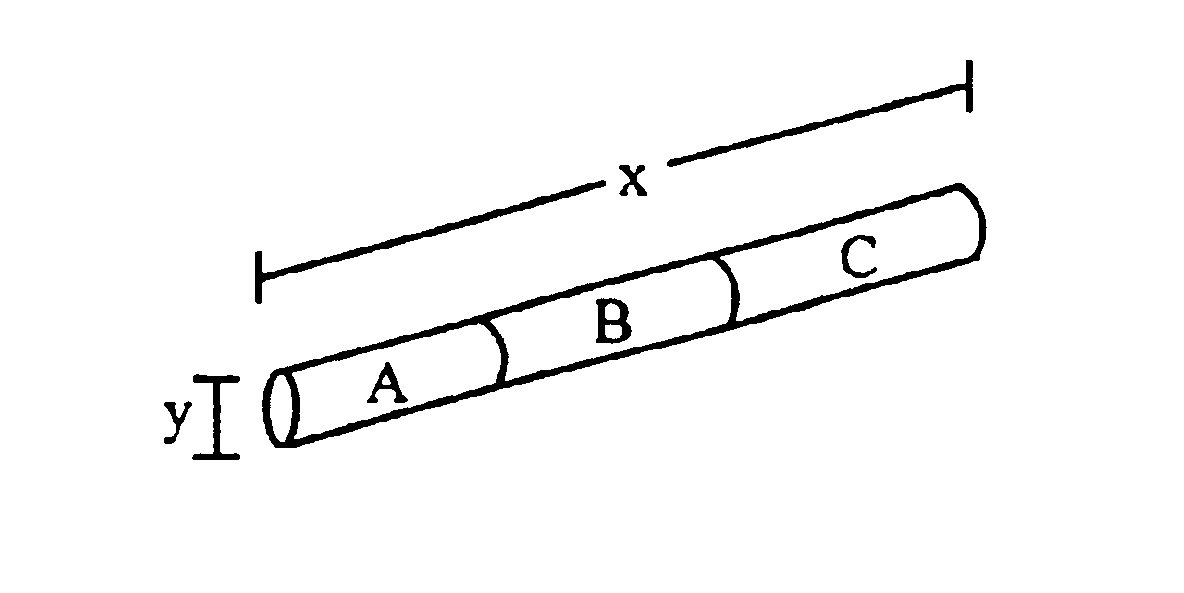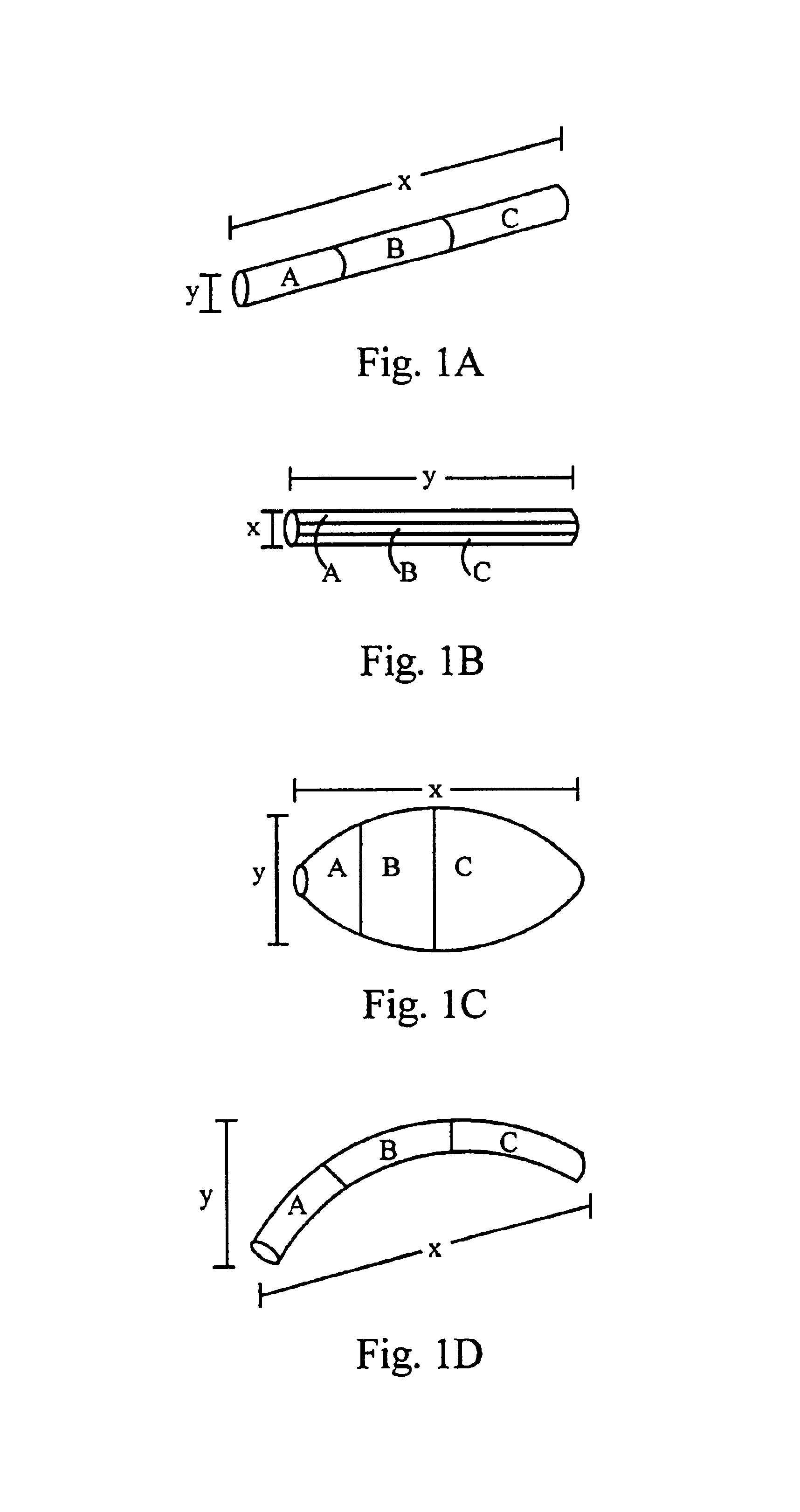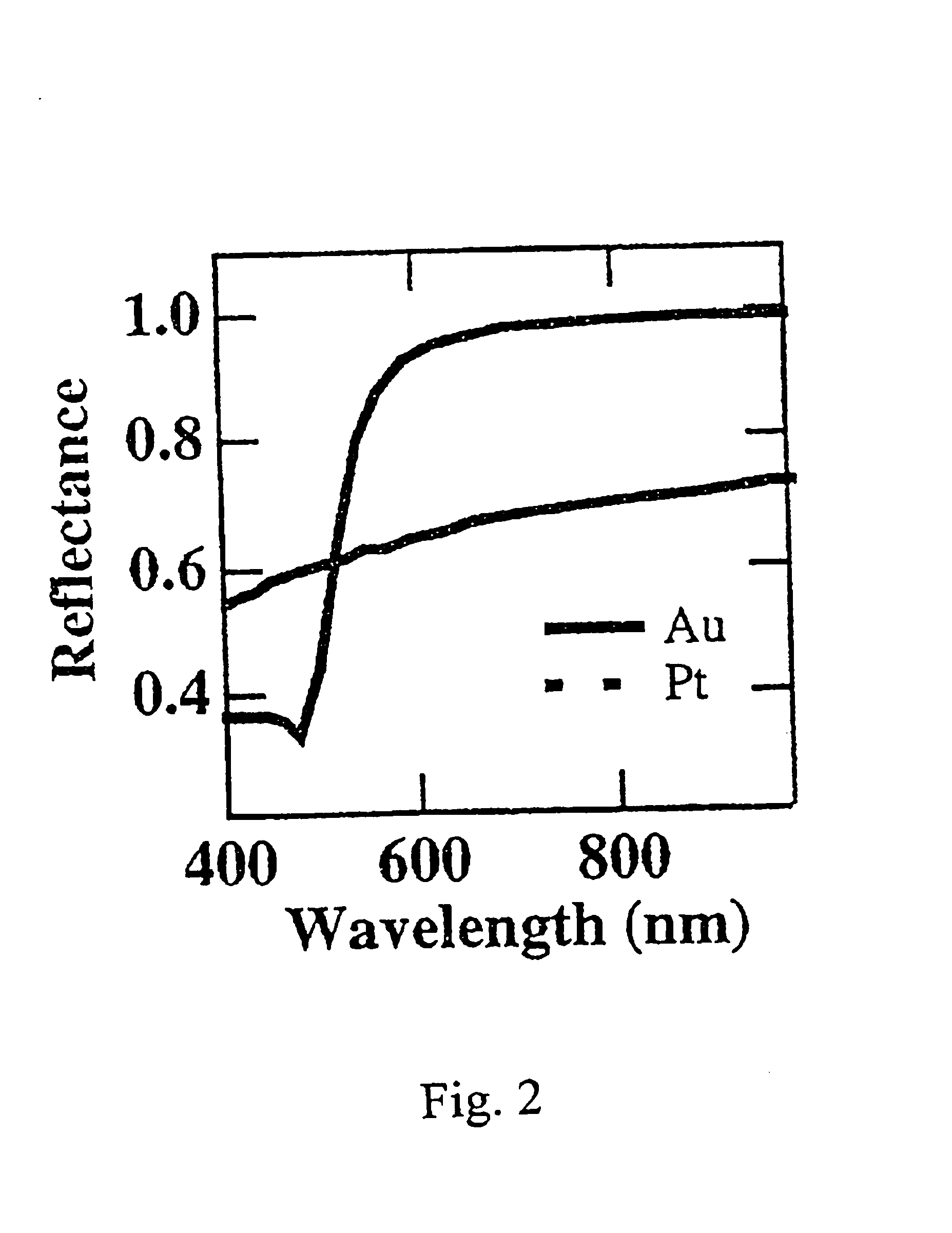Colloidal rod particles as nanobar codes
a technology of colloidal rod particles and nanobar codes, applied in the field of nanoparticles, can solve the problems of a large degree of non-specific binding, a decrease in the efficiency of hybridization (especially for cdna), and many of these seemingly revolutionary technologies are limited, and it is unclear whether these problems can be completely overcom
- Summary
- Abstract
- Description
- Claims
- Application Information
AI Technical Summary
Benefits of technology
Problems solved by technology
Method used
Image
Examples
example 1
[0164]One embodiment of the present invention is directed to the template-directed synthesis of multiple flavors of nanobar codes for the purpose of multiplexed assays. For this application it is desirable to construct a variety of different flavors which are easily distinguished by optical microscopy. For example, 10 different flavors of nanobar codes were synthesized according to the table below, using gold and silver segments. Note that the description field of the table indicates the composition of each nanobar code by segment material and length (in microns) in parentheses. For example, Flavor #1 is 4 microns long gold, and Flavor #2 is 2 microns gold followed by 1 micron silver, followed by 2 microns gold.
[0165]
Flavor #Description# SegmentsLength1Au (4)14 μm2Au (2), Ag (1), Au (2)35 μm3Au (1), Ag (1), Au (1), Ag (1), Au (1)55 μm4Au (2), Ag (2)24 μm5Ag (1), Au (1), Ag (1), Au (1), Ag (1)55 μm6Ag (1), Au (4)25 μm7Ag (4)14 μm8Ag (1), Au (2), Ag (1)34 μm9Ag (1), Au (1), Ag (1), Au...
example 2
[0169]It is an important goal to demonstrate the ability to use a wide number of materials in the nanobar codes of the present invention. To date, rod structures formed by electrochemical deposition into a membrane template (alumina or track etch polycarbonate) include Ag, Au, Pt, Pd, Cu, Ni, CdSe, and Co. Primarily, the 200-nm diameter alumina membranes have been used for convenience. Many of the materials are now also being used in the smaller diameter polycarbonate membranes.
[0170]CdSe is currently plated via a potential sweep method from a solution of CdSO4 and SeO2. Mechanical stability problems have been encountered with the metal:CdSe interface; i.e. they break when sonicated during the process of removing them from the membrane. This has been remedied with the addition of a 1,6-hexanedithiol layer between each surface. The Cu and Ni are plated using a commercially available plating solution. By running under similar conditions as the Ag and Au solutions, it was found that th...
example 3
[0171]The orthogonal functionalization of Cu and Ni nanobar codes is accomplished using on the Cu, benzotriazole and butylcarbamate, and on the Ni, dimethylglyoxime and hydroquinone. The rods are composed of Au ends with Cu or Ni middles. 1,6-hexanedithiol and 2-mercaptoethylamine are used to functionalize the ends of the rods. Benzotriazole is a compound that is typically used for corrosion inhibition for copper, meaning it should be able to bind effectively to the copper section of the rod. Butylcarbamate is a molecule with a terminal carbonyl and amine group on the same end, both of which chelate Cu well. The glyoxime and the hydroquinone are also known to chelate Ni, making them a good functional group for monolayer formation. These are combined in various ways to produce the best results for orthogonal functionalization. It is possible to exploit the differential binding equilibrium constants and order of exposure to create a large variety of orthogonally functionalized segment...
PUM
| Property | Measurement | Unit |
|---|---|---|
| width | aaaaa | aaaaa |
| length | aaaaa | aaaaa |
| particle length | aaaaa | aaaaa |
Abstract
Description
Claims
Application Information
 Login to View More
Login to View More - R&D
- Intellectual Property
- Life Sciences
- Materials
- Tech Scout
- Unparalleled Data Quality
- Higher Quality Content
- 60% Fewer Hallucinations
Browse by: Latest US Patents, China's latest patents, Technical Efficacy Thesaurus, Application Domain, Technology Topic, Popular Technical Reports.
© 2025 PatSnap. All rights reserved.Legal|Privacy policy|Modern Slavery Act Transparency Statement|Sitemap|About US| Contact US: help@patsnap.com



